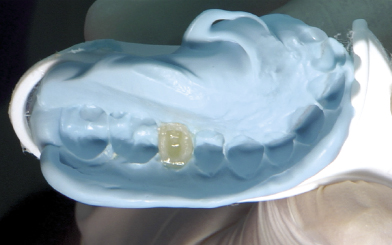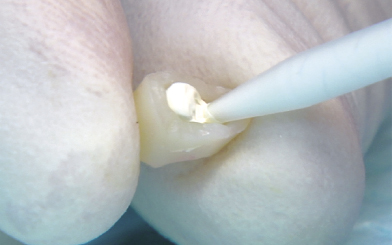27
Provisional (temporary) dental cements
Figure 27.1 Provisional restoration in single quadrant impression. (Courtesy of Dentsply International.)

Figure 27.2 Loading Integrity® provisional restoration with provisional dental cement, prior to luting onto prepared tooth. (Courtesy of Dentsply International.)

Figure 27.3 Setting reaction of zinc oxide–eugenol.

Figure 27.4 Dispensed paste-paste provisional cement. (Courtesy of Dr. Karen Hallisey.)

Table 27.1 Properties of provisional dental cements

Provisional or temporary cements are used for luting of provisional indirect restorations, including crowns, fixed partial dentures (FPDs), inlays, and onlays, as well as for temporary cementation of definitive (final) restorations. They are also recommended for the cementation of crowns and FPDs on implants. Desirable properties of provisional cements are summarized in Box 27.1. Provisional cements are also used for temporary filling of the access opening between root canal treatments, as interim restorations on implants, and during nonvital tooth bleaching. Typical clinical use of a provisional cement is shown in
Stay updated, free dental videos. Join our Telegram channel

VIDEdental - Online dental courses


